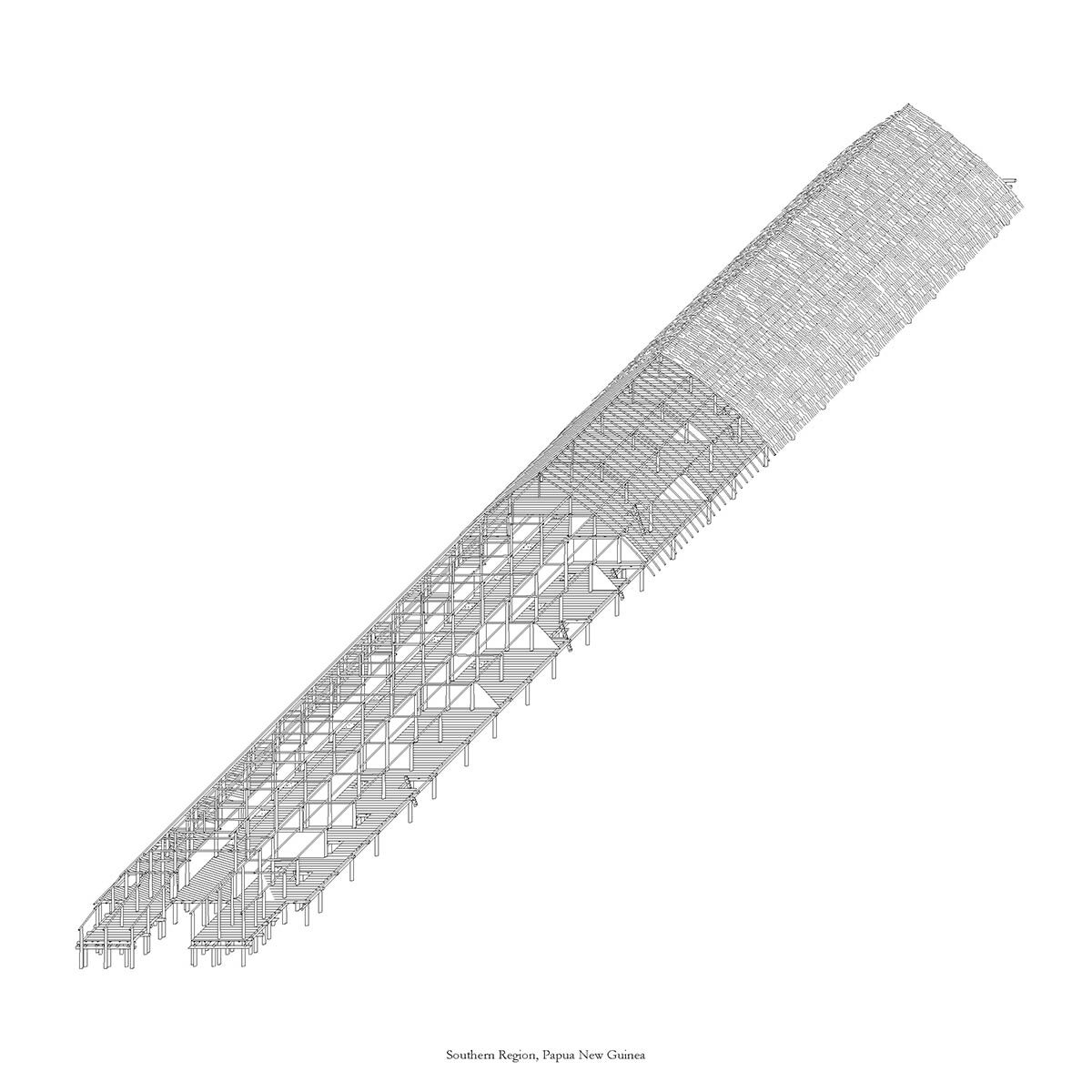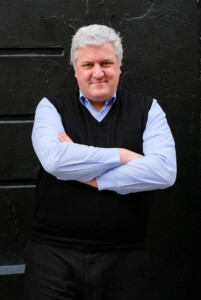Pier Vittorio Aureli, “The Longhouse”

Gogodala Longhouse, Papua, New Guinea. Drawing by Dogma.
A recording of this event is available with audio description.
Event Description
The lecture presents Dogma’s research of the longhouse, the linear, long, and narrow habitation typology that existed and still exists in many parts of the world, including South-East Asia, Europe, and North America. While there are numerous scholarly investigations of specific cases of longhouses, a comparative study of this ubiquitous type of habitation is missing. This lacuna is both surprising and understandable. It is surprising because the longhouse is among the most ubiquitous forms of pre-modern dwellings. Alternatively, it is comprehensible because the longhouse represents a type of habitation whose form, materiality, inhabitation and especially building techniques are at odds with modern domesticity. Unlike dominant forms of domesticity that reinforce private property and the nuclear family, longhouses were instead communal structures that could house an extended family, kin group or entire community under one roof. Longhouses often blurred the distinction between the sacred and profane, public, and private, residence and workplace. We have to be careful to not romanticize – or worse fetishize – the longhouse, but its many declensions throughout many parts of the world inevitably challenges many contemporary assumptions about domestic space and its history.
Speaker
 Pier Vittorio Aureli (Rome, 1973) is an architect and educator. He studied at the Istituto di Architettura di Venezia (IUAV) and later at the Berlage Institute and TU Delft where he earned his PhD. Aureli currently teaches at the École Polytechnique Fédérale de Lausanne where he directs the Laboratory Theory and Project of Domestic Space. Together with Martino Tattara, he is the co-founder of Dogma, an office for architecture based in Brussels. Dogma has developed a specific interest in large-scale interventions, urban research, and especially domestic space and its potential for transformation. Aureli has published many essays and several books, such as The Possibility of an Absolute Architecture (2011), Living and Working (with Dogma, 2022) and Architecture and Abstraction (2023). He is currently working on an anthology of Manfredo Tafuri’s writings.
Pier Vittorio Aureli (Rome, 1973) is an architect and educator. He studied at the Istituto di Architettura di Venezia (IUAV) and later at the Berlage Institute and TU Delft where he earned his PhD. Aureli currently teaches at the École Polytechnique Fédérale de Lausanne where he directs the Laboratory Theory and Project of Domestic Space. Together with Martino Tattara, he is the co-founder of Dogma, an office for architecture based in Brussels. Dogma has developed a specific interest in large-scale interventions, urban research, and especially domestic space and its potential for transformation. Aureli has published many essays and several books, such as The Possibility of an Absolute Architecture (2011), Living and Working (with Dogma, 2022) and Architecture and Abstraction (2023). He is currently working on an anthology of Manfredo Tafuri’s writings.
Anyone requiring accessibility accommodations should contact the Public Programs Office at (617) 496-2414 or [email protected].
#GSDEVENTS